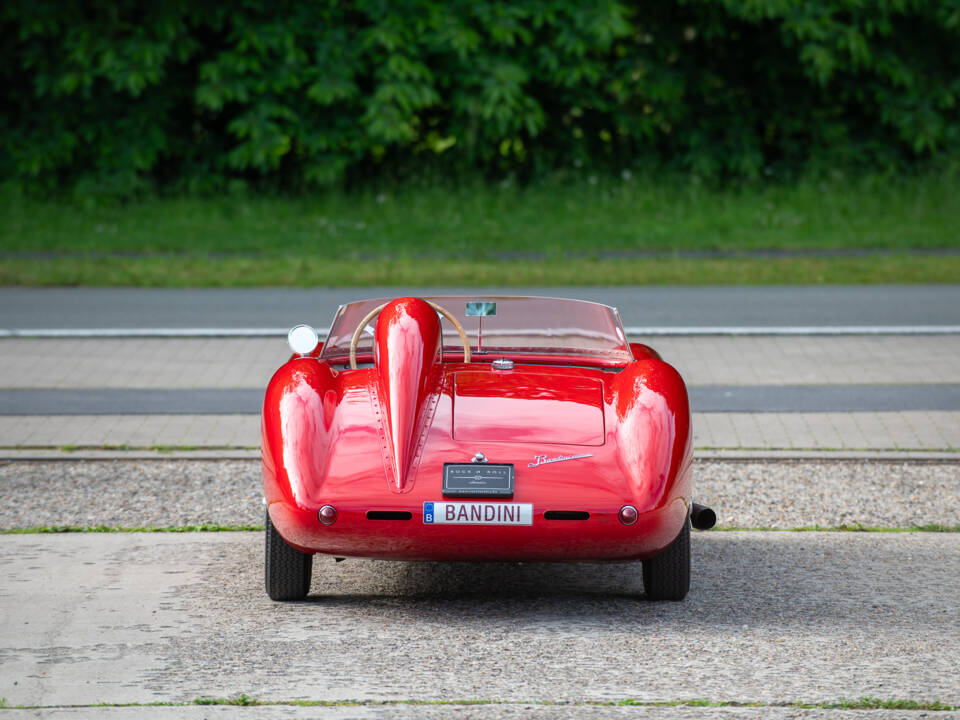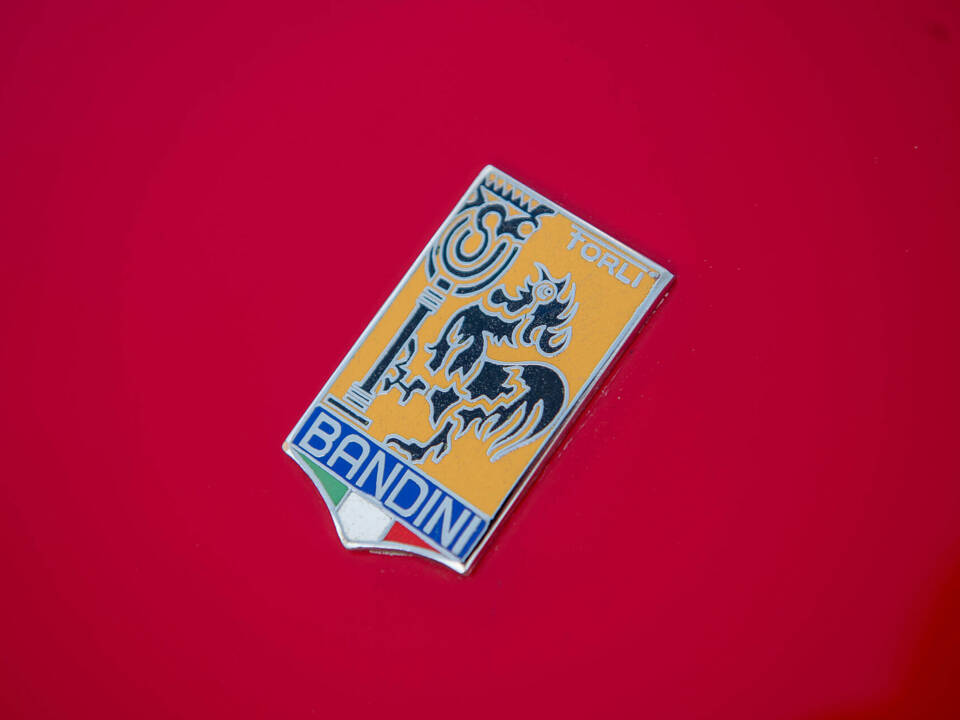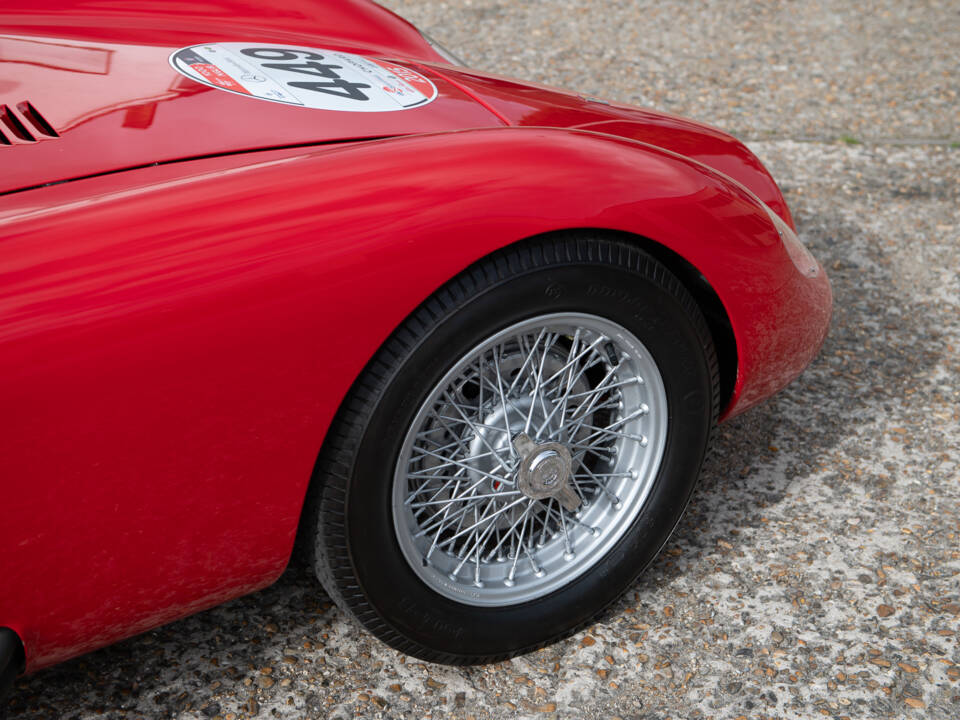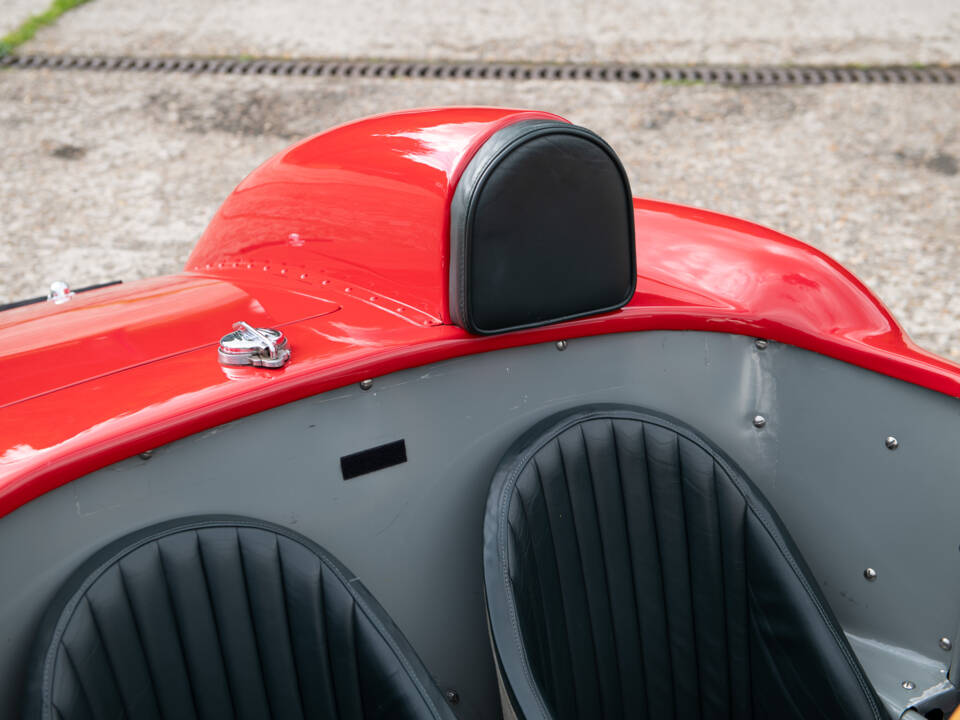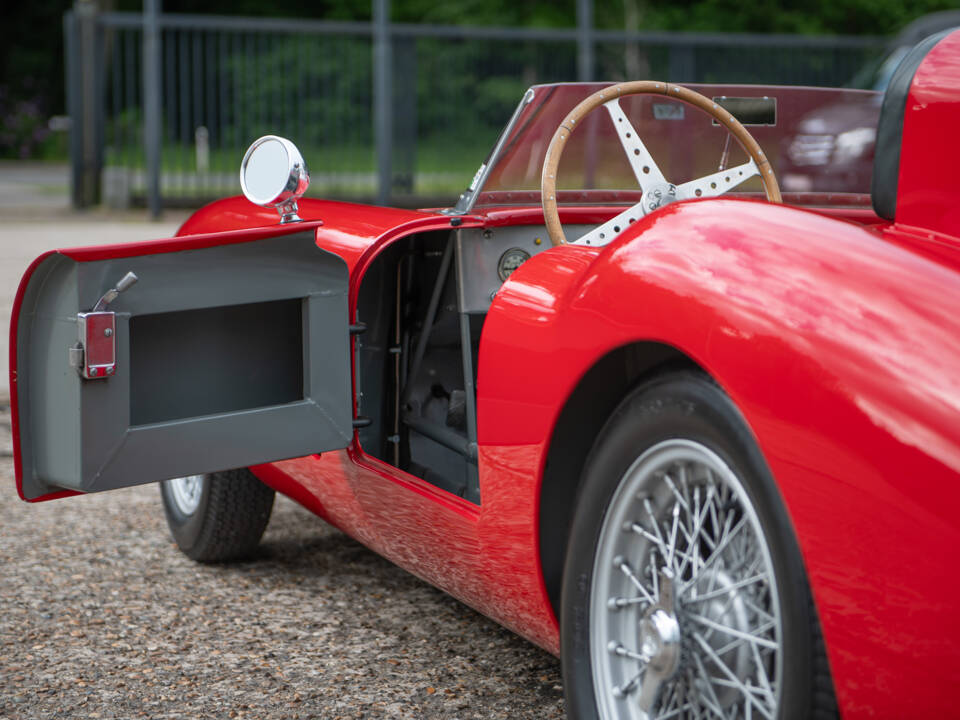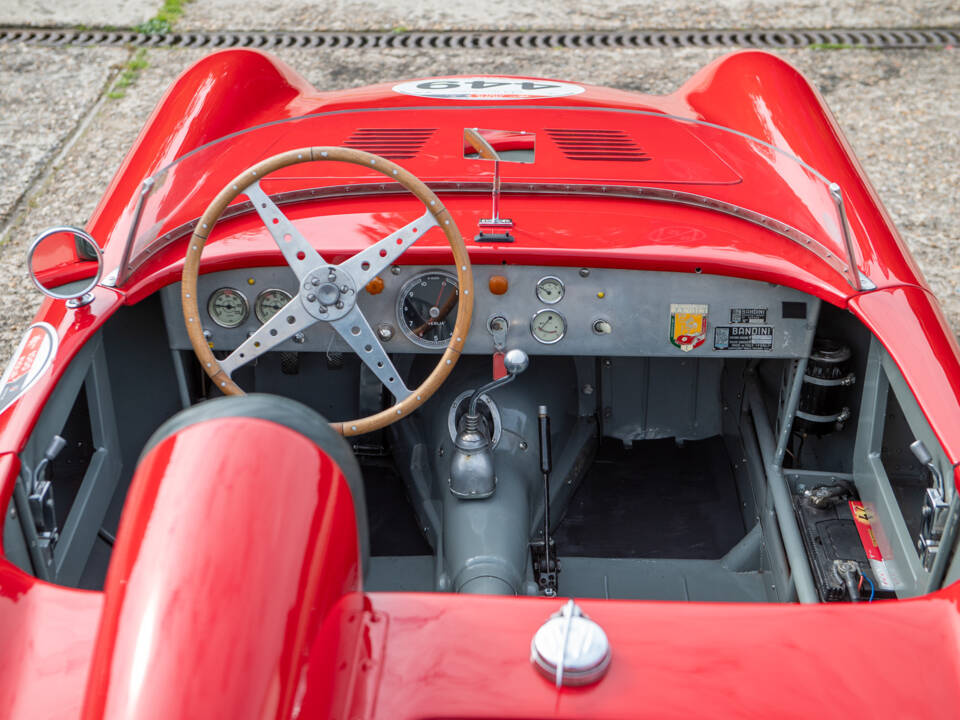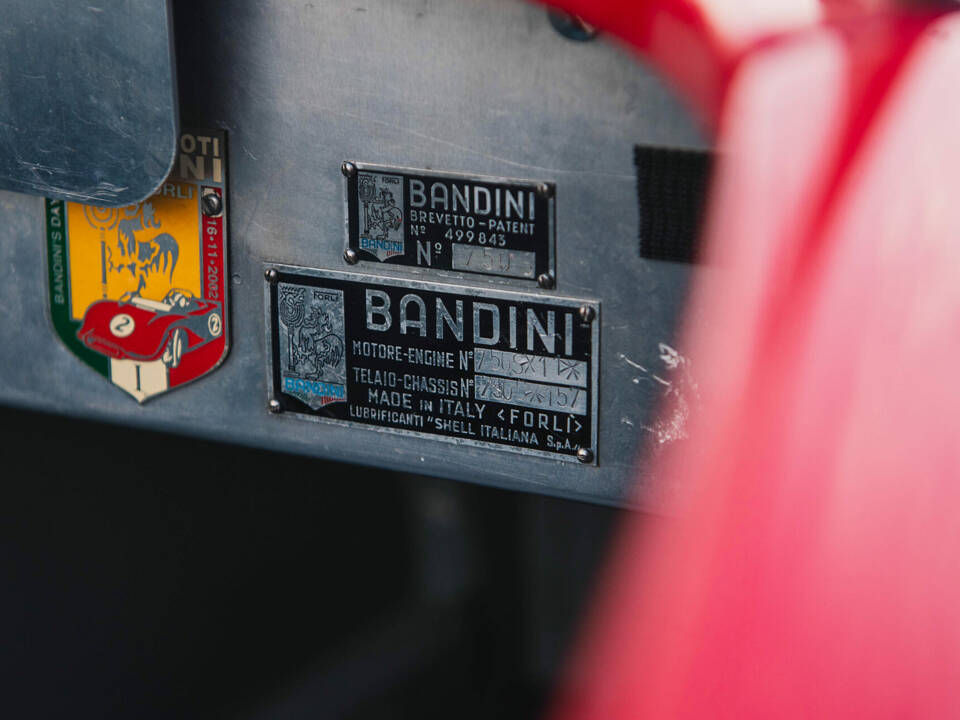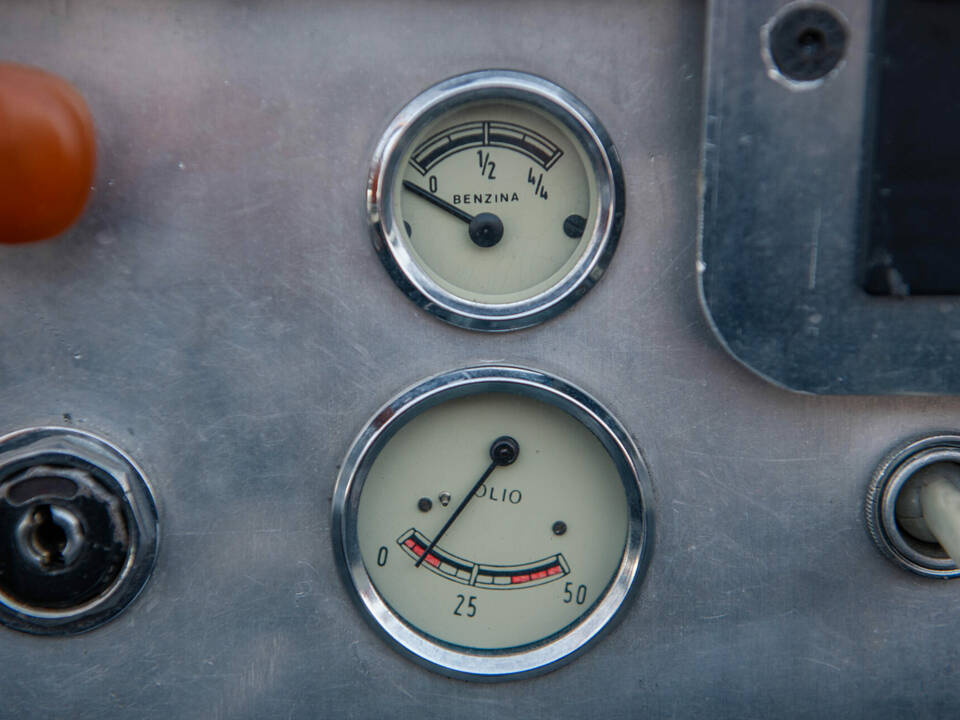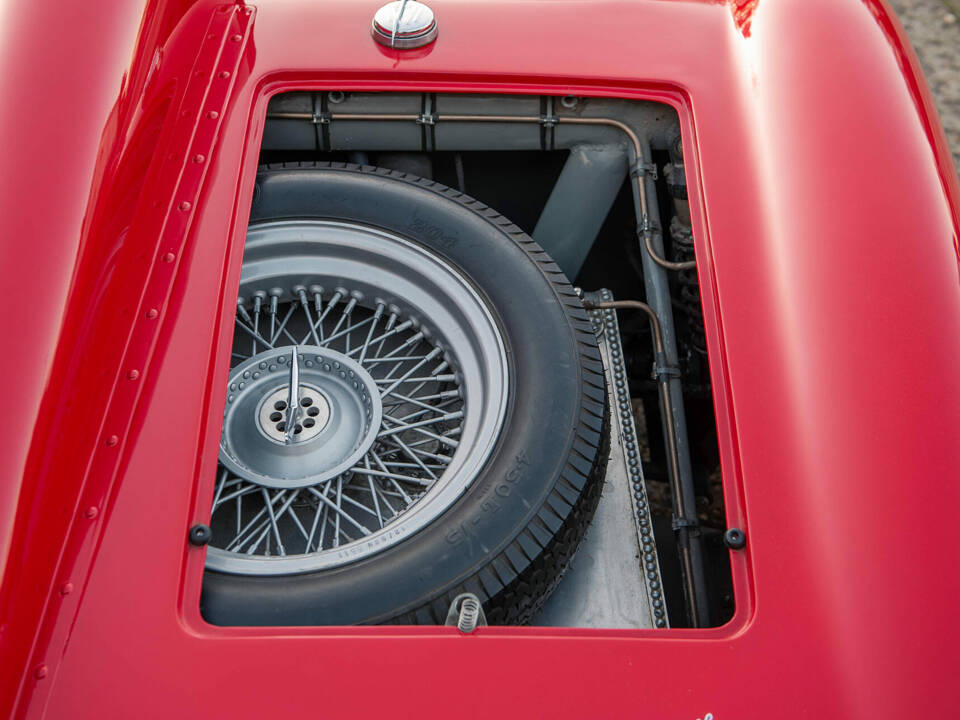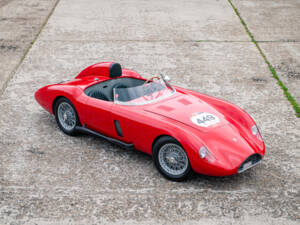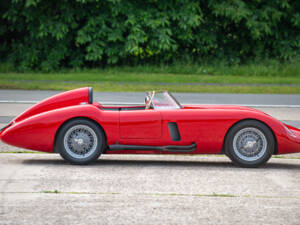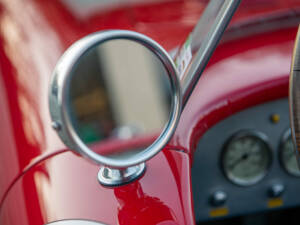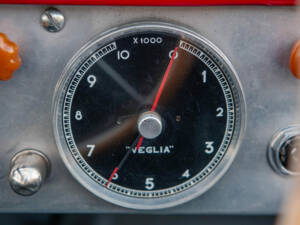1957 | Bandini 750 Sport Siluro
*Mille Miglia Participant *One of only 9 saponetta's built
*Mille Miglia Participant *One of only 9 saponetta's built
*Mille Miglia Participant *One of only 9 saponetta's built
Beschreibung
1957 Bandini sport internazionale "Saponetta"
- Mille Miglia participant
- one of only 9 saponetta’s built, the only one known with Bandini 1000cc engine
- Excellent racing history
- 1000cc engine rebuilt by Ilaro Bandini himself
- Concours winner
- Strikingly beautiful and masterly crafted alloy bodywork
In 1946, Bandini began designing and building several small racers, including the 750 Sport Internazionale, which was constructed from 1957 to 1961. It was created solely for racing in the Italian Championship, known as the Sport Internazionale, but it also achieved great success in the United States. The Saponetta’s most striking feature was its magnificent bodywork, hand-built in Bandini's workshops by craftsmen from the nearby Caproni aircraft factories. They started by heating the aluminum and then hammering it over sandbags to achieve the desired shape. The smooth lines and small dimensions earned the Sport Internazionale the Italian nickname 'Saponetta', meaning 'little soap'. Little is documented about Bandini's total production, but it is believed that 75 of these racingcars were built, with 46 still known today, including only 9 "Saponettas." These “Saponetta’s were more streamlined evolutions of the Siluro’s, and combined the lightweight of the Siluro’s with a more streamlined body in order to achieve higher top speeds. To put things in perspective: the chassis of the “Saponetta” weighed in at only 19(!) kilograms, with a complete car weighing between just 350 and 390kg depending on configuration. With the final 1000cc versions producing over 90hp, the power to weight ratio was an impressive 257hp per ton, no wonder these little devils proved to be so victorious!
This particular example, chassis 157, began its life as a “normal” 750cc but was rapidly upgraded to 850cc in 1960 and 1000cc in 1961, following the Italian sports car rules of those days. “157” was raced extensively in Italy by several Italian riders at the helm, including Giorgio Cecchini and Benelli. Giorgio Cecchini proved to be a formidable driver, starting out hi sracing career with several Stanguellini’s but moving over to Bandini’s by the end of the fifties. Cecchini raced “157” from 1960 up until 1965, competing in no less than 22 races and clinging on to victory on multiple occasions. Because of his long lasting relationship with the brand and very competitive results, he became a close personal friend of Ilario Bandini himself.
In 1964 Cecchini, in an attempt to make his already potent 1000cc Bandini even more competitive, has altered the rear of the car to a more Kamm-tail styled rear. “157” has remained in this configuration up until 1977, when the car was found in Italy by Rudy Pas from the Netherlands. Rudy imported the car in the Netherlands, where it arrived in September 1977. When this obviously raced but still very original Bandini arrived there, mr. Gijs Van Beusekom, one of the onlookers , immediately fell in love with this beautiful time machine and made mr. Pas an offer he couldn’t refuse. Eager to get started on the restoration of “157”, mr. Geusekom contacted mr. Ilario Bandini himself to arrange for him to rebuild the 1000cc engine that came in boxes with the car. It took mr. Bandini almost two years, some parts including a freshly molded carter and exactly three Million Lira’s (see written and signed “invoice) to rebuild this 1000cc masterpiece to as new condition. A test bench power run in 2011 has shown the car delivering 88.8hp at 5700rpm (so not having tried to reach the rev limiter of 8500rpm at all), which is very close to the claimed factory output of 91hp. A true artisan, even at his (the) old age!
Unfortunately the rebuild of the engine had cost a lot more than expected, so the restoration of chassis and body were postponed until funds became available again. However, as it goes with lots of these postponed projects, the funds never really came so the car remained dormant for 20 years until it was eventually sold to a friend of the owner: fellow Dutchman Ton Ottevanger. Ton wasted no time and between 2000 and 2007, the car has been expertly restored in the Netherlands. During this very thorough restoration, no stone was left unturned in order to bring this car back to its exactly as original configuration. The chassis proved to be in remarkable condition and the body, though somewhat battered and bearing some battle scars here and there was also deemed largely original. The decision was made to undo the 1964 Kamm-tail upgrade and bring the rear back to as new streamlined condition. The alloy skin was carefully taken of the car and the correct form replicated and incorporated in the rest of the cars’ body. The car’s custom made rear proved to be a real blessing since this very distinctive form (one of just one in this exact configuration) enabled a correct identification of the car, in most cases not an easy feat at all with these Bandini racecars!
It is safe to say that Bandini, just like most of the other Etceterini brands of those days, was quite flexible concerning the use of chassis numbers. Whilst cars destined for racing in the USA almost never bore chassis numbers, the street races in Italy demanded the car to have a correct chassisnumber and matching registration documents. In order to avoid lengthy and costly homologation per car, Bandini and others used each set of official numbers for several cars and restamped several cars with “new” numbers in order to match the car with the available paperwork of the day. Luckily, this car is the only one to bear both the 157 and 160 numbers and in addition to that, the one of one tail on the pre restoration car could be seen on several original racing pictures of the day, making this a quite easily (at least for a Bandini) identifiable car indeed.
Al of the restoration works were performed by real artisans and the 6+ years of work have been carefully documentend by an elaborate restoration photobook, picturing the car before, during and after the restoration.
The car is registered in the Italian car registry and is elaborately described and pictured on no less than 10 pages in the official Bandini book, including an overview of the 22 races by Cecchini.
The car also comes with:
- letters of previous owners
- letters between previous owners and John De Boer, expert on the matter
- original importation documents from 1977
- An invoice of the engine rebuild, writtend and signed by mr. Bandini himself
- A power-run printout
- An original Bandini sales brochure
- Original pictures of this car racing
- A picture of the car in front of the factory when new
- A FIVA pass
- Service and repair invoices
- A very elaborate photobook of the car before, during and after the lengthy restoration
- Taxation reports
- Old magazine writings about the car racing
- A magazine report of the car winning its class the Antwerp concours d’elegance
- Belgian registration documents
Since the restoration the car has competed in several rallies such as the Mille Miglia, Zoute Grand Prix etc… it has also won its Class in the high-level Antwerp concours d’elegance. This is a great looking and very rare piece of automotive history, perfectly restored and highly original. It is Mille Miglia eligible and ready for any concours, supported by great racing provenance and a splendid maintenance record.
Fahrzeugdetails
Fahrzeugdaten
- Marke
- Bandini
- Modellreihe
- 750
- Modell
- 750 Sport Siluro
- Erstzulassung
- 01.1957
- Baujahr
- 1957
- Tachostand (abgelesen)
- Fahrgestellnummer
- Nicht angegeben
- Motornummer
- Nicht angegeben
- Getriebenummer
- Nicht angegeben
- Matching numbers
- Ja
- Anzahl Besitzer
- Nicht angegeben
Technische Details
- Karosserieform
- Rennwagen
- Leistung (kW/PS)
- 66/90
- Hubraum (cm³)
- 1000 (ab Werk: 747)
- Zylinder
- 4
- Anzahl Türen
- 0
- Lenkung
- Links
- Getriebe
- Manuell
- Gänge
- 4
- Antrieb
- Heck
- Bremse Front
- Nicht angegeben
- Bremse Heck
- Nicht angegeben
- Kraftstoff
- Benzin
Individuelle Konfiguration
- Außenfarbe
- Rot
- Innenfarbe
- Schwarz
- Innenmaterial
- Leder
Zustand & Zulassung
- Zustandskategorie
- Original
- Gutachten vorhanden
- Zustand
- Zugelassen
- Fahrbereit
- Mille Miglia geeignet









